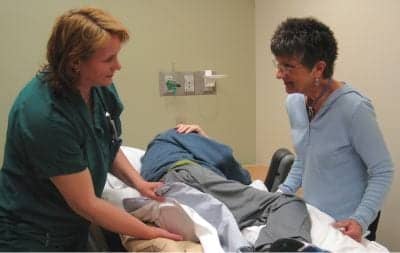A review of hospitalizations followed by stays in a post-acute care (PAC) facility finds risk factors that may contribute to rehospitalization.
These factors include a patient’s need for an invasive device, such as a feeding tube or urinary catheter, and the patient’s need for advanced care, such as dialysis or oxygen therapy, according to a media release from University of Colorado Anschutz Medical Campus.
Researchers from the University of Colorado School of Medicine, reviewed more than 3,200 hospitalizations followed by stays in acute care facilities to determine these risk factors. They note in the release that nearly half of the re-hospitalizations occurred within 14 days of initial release from the hospital.
The study was published online by JAMDA, the Journal of Post-Acute and Long Term Care Medicine, per the release.
“Patients who experienced readmission during their stay in a post-acute care facility were less likely to return to the community,” says lead author Robert Burke, MD, academic hospitalist and health services researcher at the Denver VA Medical Center and an assistant professor at the CU School of Medicine, in the release.
Rehospitalized patients also had a higher mortality rate, the researchers note.
“Readmitted patients were twice as likely as non-readmitted patients to die in the 30 days following hospital discharge and nearly four times as likely to die in the 100 days post-hospital discharge,” the authors write, per the release.
As well, the researchers found that payment systems may affect patient outcomes.
“Under a prospective payment system, hospitals are incentivized to discharge these patients as early as possible, and in contrast to discharges home, hospitals are not currently penalized for readmissions from PAC (post-acute care) facilities,” the authors write, according to the release. “PAC facilities may be substituting for prolonged hospital care in some cases.”
[Source(s): University of Colorado Anschutz Medical Campus, Science Daily]





